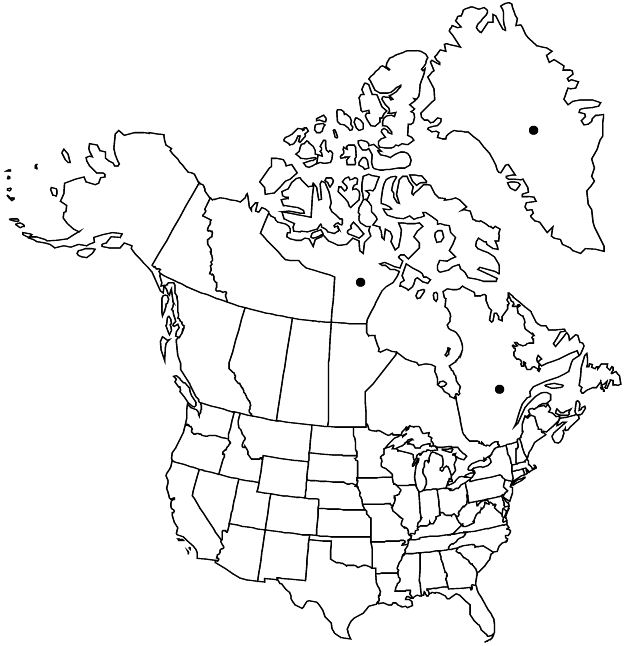Potentilla vahliana
Monogr. Potentill., 172. 1820.
Plants densely tufted to cushion-forming. Caudex branches usually stout, columnar, sheathed with marcescent whole leaves. Stems erect, (0.2–)0.3–0.8(–1) dm, lengths 2–4(–5) times basal leaves. Basal leaves 1–3 cm; petiole 0.5–2 cm, long hairs common to abundant, ascending to spreading, 0.5–1.5(–2) mm, soft to weak, smooth, short hairs absent, crisped/short-cottony hairs sparse to abundant, glands sparse to common; leaflets separate to slightly overlapping, central obovate, 0.8–1.2(–1.5) × 0.5–1(–1.5) cm, sessile or subsessile, base cuneate, margins revolute, distal ± 1/2 incised (1/3–)1/2–3/4 to midvein, teeth 2–3 per side, ± approximate to distant, surfaces ± dissimilar, abaxial yellowish white or grayish, long hairs 1–2 mm, cottony-crisped hairs ± dense, adaxial green to yellowish gray, long(/short) hairs common to abundant, crisped hairs absent or sparse. Cauline leaves 0–1(–2). Inflorescences 1–2(–3)-flowered. Pedicels 0.5–1.5 cm in flower, to 3.5 cm in fruit. Flowers: epicalyx bractlets broadly ovate, 2.5–4(–5) × 1.5–3 mm, ± as wide as sepals, margins flat or revolute, red glands absent; hypanthium 2–4 mm diam.; sepals 2.5–5(–6) mm, apex subacute to acute; petals 8–10 × 7–12 mm, significantly longer than sepals; filaments 1–1.2 mm, anthers 0.4–0.6 mm; carpels 30–40, apical hairs absent, styles narrowly columnar, distinctly papillate-swollen at very base, 1–1.1 mm. Achenes 1.1–1.5 mm. 2n = 42, 49, 56.
Phenology: Flowering summer.
Habitat: Gravelly dry tundra, dry ridges, gravel flats, herb slopes, acidic and calcareous bedrock
Elevation: 0–700 m
Distribution

Greenland, Nunavut, Que.
Discussion
As circumscribed here, Potentilla vahliana is confined to northeastern arctic Canada (including northernmost Quebec) and western Greenland. Plants previously assigned to P. vahliana from northwestern Greenland, Yukon, most of arctic Canada, and Alaska are now relegated to P. subvahliana.
Plants from western Greenland, whence Potentilla vahliana was described and typified, have petioles with at least some short cottony or crisped hairs in addition to long, smooth hairs, and the styles have distinct papillae at the very base. These features are derived from a combination of the P. uniflora Ledebour and P. nivea groups. Potentilla vahliana is of a higher polyploidy than the species of the P. uniflora group. Potentilla vahliana is treated here as a geographically restricted species, most probably from cross(es) between P. nivea in the narrow sense (probably the Atlantic race, often 2n = 70) and P. subvahliana (2n = 28); it shares several features with the latter, not least of which is leaf dissection and the columnar structure of the caudex.
In mainland Quebec, plants combine features from Potentilla arenosa and P. vahliana; that is, the straight hairs are slightly verrucose, not smooth as in P. nivea, P. subvahliana, and P. vahliana in the narrow sense. They form populations and probably should be described as a new hybrid species.
Selected References
None.